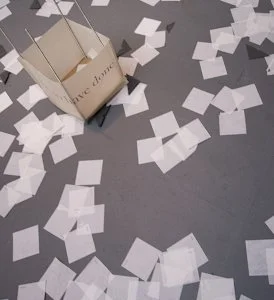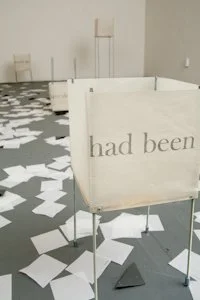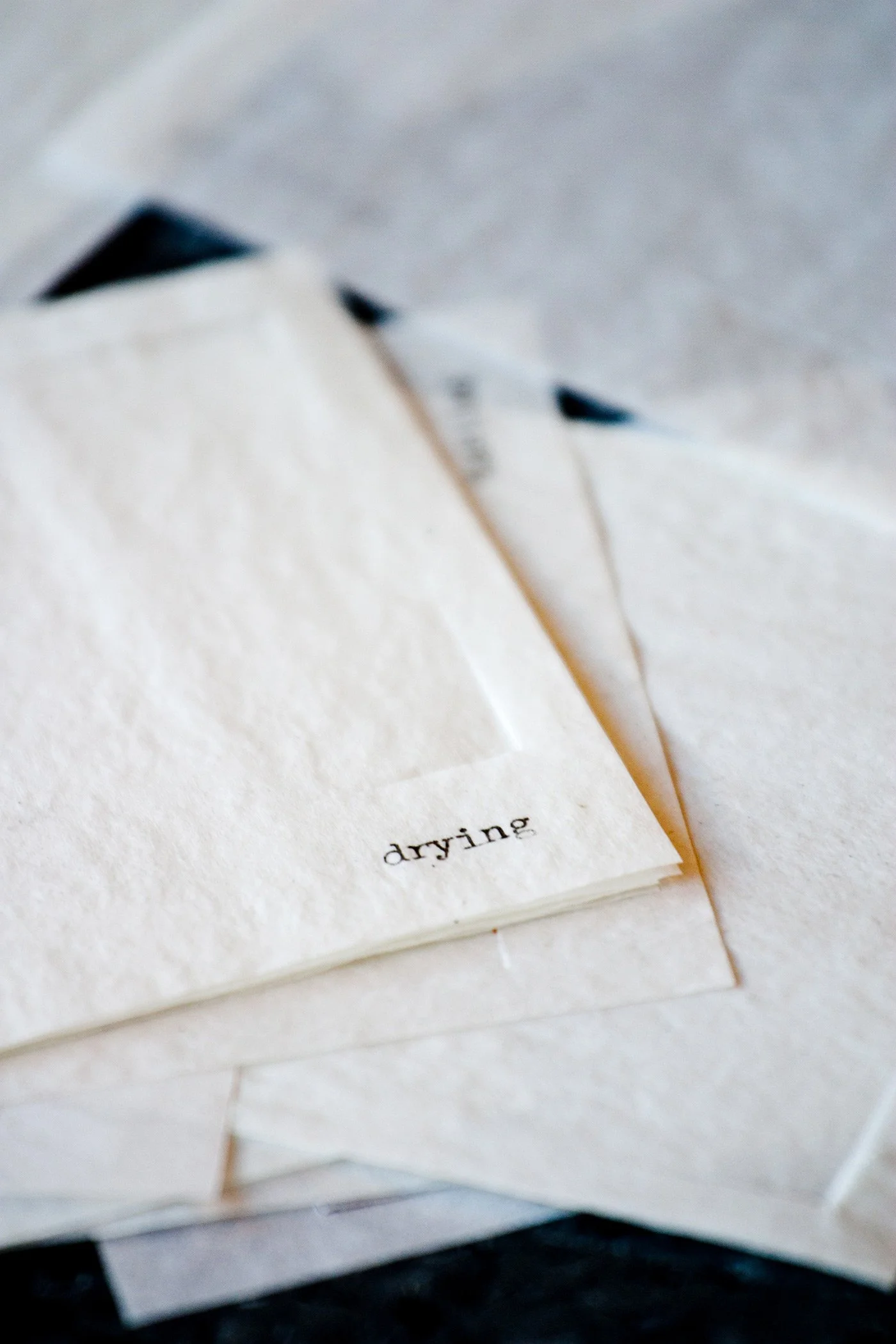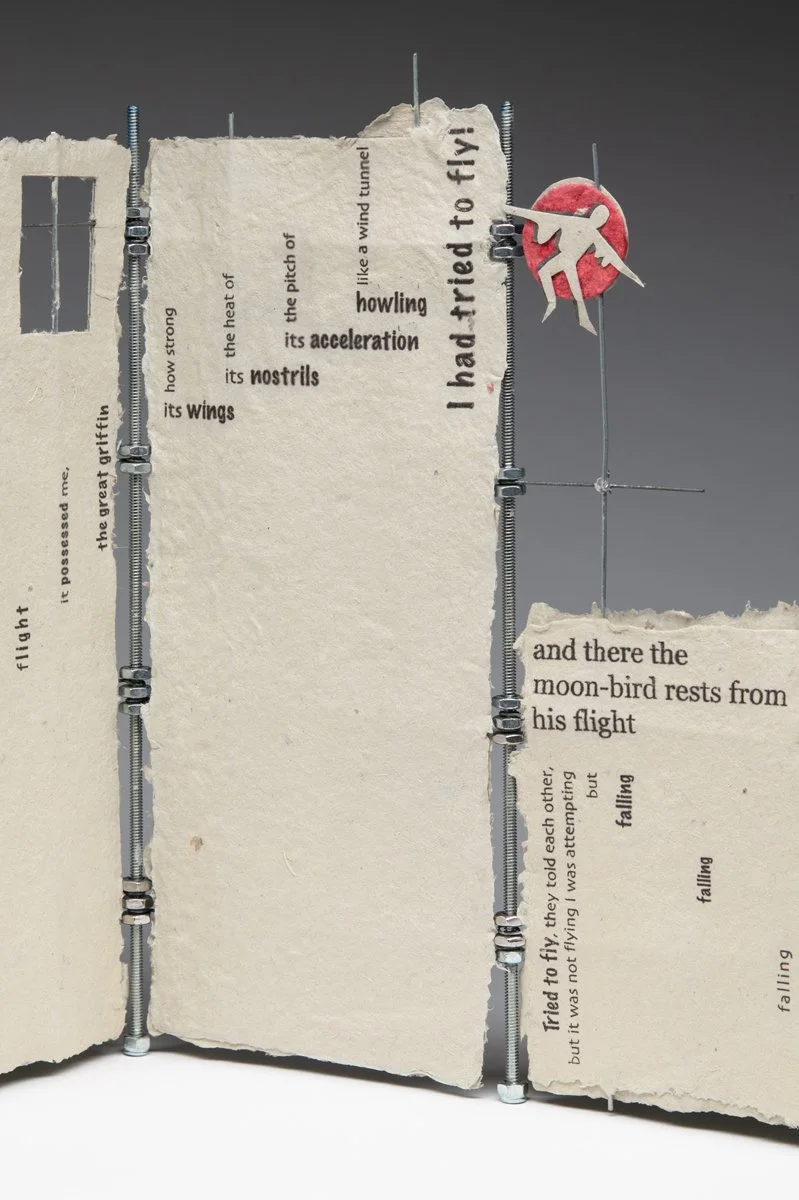
Books in Installation
I was Mistaken for a Noun
Installation Concept, Design and Construction by Heather Doyle-Maier
2009
Photos by the late Efrain Cruz and by the staff of the Center for Visual Art, Metropolitan State University of Denver.
Edition
Unique Installation (edition of 1)
Measurements
Dimensions Vary
In the collection of
Installation process materials in the collection of Special Collections, University of Denver Penrose Library
Residual installation components in the collection of the artist
About the Ideas Behind the Installation:
Inspired by vintage family snapshots, I Was Mistaken for a Noun considers the differences between the internal experience of the self and its external representation. Photographs capture our likeness, an image of ourselves that would seem to be the “I” that we are. Words and sentences also act to signify us, with nouns and adjectives and verbs offering possibilities to name and describe who we are and what we do. Yet the representations that are photographs and the representations that are words make inevitable alterations: the ongoing and dynamic internal experience of one’s self as continually happening becomes an object: stopped, static, summarized. The self ceases to be a happening, unfolding, present-progressing verb and becomes suspended in time and stuck, caught as a noun.
My family photos are filled with people captured in mid-motion: mouth open while talking or chewing, rear end to the camera while bending down, face in the process of turning away. These freeze-framed moments have often been embarrassing, and as mementos, they have left their own deep mark on the memories they preserve. It wasn’t until years later that I realized I wasn’t actually ugly and awkward, as it seemed it those photos; this installation is a gift back to my younger self who was convinced that she was.
About the Text and the Action of the Installation:
I assembled dozens of present-progressive verbs by revisiting old photographs and naming the actions going on in them. I then typed these onto the bottom corners of small squares of paper that were cut and punched to resemble Polaroid photographs. The papers were loaded into ceiling-mounted dispensers that fed them out singly or in small bunches to fall and drift. Waiting below were open-top boxes, each printed with a verb tense (e.g. past, future, present, future perfect). The papers descended in relationship to the various-height box forms and to the photo-corner shapes mounted/painted on the floor. Many papers missed the boxes and so remained “unbound” – but some papers landed in a box, bound to (and therefore trapped in) their new verb tense.
About the Materials and Components:
Onionskin typing paper was selected for the small “photo” squares because of its lightness and ability to drift as it fell from a height. I used a vintage typewriter to type the verbs and an adapted square paper punch to partially cut corners that implied Polaroid photographs, then cut the papers to size with a paper trimmer. The paper dispensers were made from Davey board covered with hand-tinted Tyvek and bound together on the edges with gaffer’s tape. Inside each dispenser was a small unit with a motor that turned rubber washers on threaded rods, feeding the individual papers as they were pressed up into the washers by a weighted platform on a fulcrum. Text for the large open-top boxes was typeset in Time New Roman, then laser printed and transferred to the box paper using a xylene solvent. The boxes were then dip-waxed by hand using beeswax. The photo corners on the floor were made from cover weight black paper for the first presentation of the installation, and the shapes of photo corners rubber-stamped onto the floor with acrylic paint in a subsequent presentation.
Small collections of the page papers (presented unbound in a portfolio) are available for purchase; please inquire.











